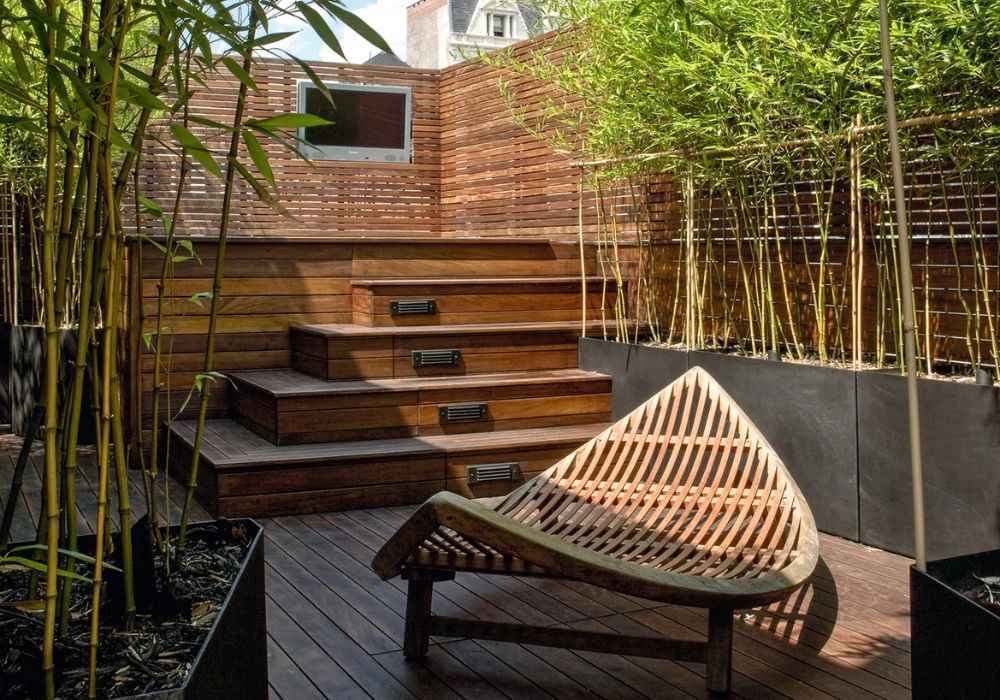With urban populations continuing to rise globally, more people are living in dense urban areas with limited outdoor space. Rooftop gardens provide an opportunity for homeowners and renters alike to transform unused rooftop spaces into beautiful oases of green.
They not only beautify living spaces but also have environmental benefits such as reducing temperatures, managing stormwater runoff and providing habitat. This article explores 10 rooftop garden ideas to inspire your own rooftop design.
Open Concept Design

An open concept rooftop garden design maximizes the sense of space to make smaller areas feel more airy and spacious. Removing unnecessary physical barriers like dense foliage, high fences or opaque walls will create the illusion of more room to move. Incorporating a few carefully placed large plants or trees instead of filling the space densely can maintain privacy while preserving light and views. Using transparent glass balustrades or low wooden fencing allows enjoyment of the surroundings from indoors as well as outdoors.
Create Privacy with Climbers

For rooftops that are more exposed or visible to neighbors, climbing plants can provide desirable privacy and greenery. They take up minimal space while covering walls or structures. Vines like Clematis, climbing roses or English ivy are hardy, colorful options. Consider erecting a lightweight frame, trellis or wires for them to scale up. Alternatively, taller shrubs, hedges or portable folding screens provide privacy without permanent installation. Mix climbers with other groundcover plants for fullness.
Raised Beds for Easier Maintenance

Placing vegetation in raised beds keeps roots protected and contained, simplifying lawn care and avoiding potential damage to the roof membrane. Wood, concrete or metal beds elevated a few inches provide excellent drainage and accessibility. Fill with premium soil suited to the climate and plant selection. Beds can line walls, wind through the space in curves or form geometric edges. Positioning near the perimeter maximizes usable open areas.
Utilize Vertical Surfaces

To fully optimize vertical space on a rooftop, consider window boxes, hanging baskets and wall planters in addition to vines. These grow plants upward rather than outward, conserving precious floor space. Install sturdy metal or wooden shelving, rails or hooks specifically rated for outdoor use near walls or fences. Select trailing or cascading plants that won't outgrow their containers but provide colorful foliage. Pole beans or tomatoes grown on sturdy stakes also save space.
Create a Focal Point

Drawing the eye to a particular area gives depth and interest to a small rooftop design. Focal points can include architectural features, artwork or a unique water feature. Having an area that stands out, like a colorful hanging chair or bistro set, encourages lingering. Other attention-grabbing focal ideas are a striking specimen tree, reflecting pool or living wall of greenery. Enhancing one spot creates a sense of flow throughout the whole space.
Add Comfortable Seating

To fully enjoy lounging outdoors, incorporate inviting furniture suited to the style of the space. Consider low-maintenance, weatherproof wicker sections, swings or modular lounge sets that flexibly arrange. For an urban rooftop, modern aluminum or teak pieces elegantly complement contemporary plantings. Cushions or throws in coordinating hues tied to planter colors bring comfort. Adding shade with market umbrellas or a canopy allows relaxing day or night.
Grow Edibles for Fresh Produce

For any rooftop owner in an apartment building, a garden that supplies homegrown fruits and vegetables adds great value. Dwarf varieties of cherry tomatoes, herbs or salad greens thrive in containers. Dwarf trees including dwarf citrus, figs or plums planted far apart offer tasty harvests. Annuals like zucchini, peppers, beans or peas produce quickly. Larger pots or raised beds alongside climbing vines maximize yields from a small space. Consider rainwater collection for irrigation.
Incorporate Decorative Lights

Illuminating a rooftop extends enjoyment into evening hours and provides safety and ambiance. Solar-powered path lights or string lights tucked between plants warmly light walking areas. Uplighting Palm trees with a subtle pinspot adds drama. Modern lampposts lend architectural definition. Sheltered nooks benefit from hanging lanterns. ProgrammableRGB lights in planters change horticultural shows by season or festive color schemes. Timers ensure lights aren’t left on wastefully all night.
A Calming Water Feature

Besides drawing birds and beneficial insects, the soothing sounds of moving water create an oasis-like feel on a rooftop. Fountains as small as compact tabletop models add atmosphere. Simple bowls tucked among rocks on pedestals quietly bubble. Larger recirculating pumps elegantly release water back into the basin. For sustainable flair, harvesting rainwater provides a non-potable water supply. Include pebbles, stones or water plants in some areas for visual interest at the water's edge.
Rooftop Trees for Impact

When structural designs and soil depth allow, trees impart substantial natural ambiance from tall canopies. Dwarf varieties or compact sweeps fit smaller spaces. Fast-growing birches, cherries or maples provide dappled shade. Fruited trees such as apple, pear or figs produce yields. Extendo pot systems or Silva cells mitigate weight concerns from in-ground root balls. Strategizing irrigation, pruning and protecting from elements is key to mature specimens thriving elevated. Their vertical presence connects skyward for maximized green impact.





